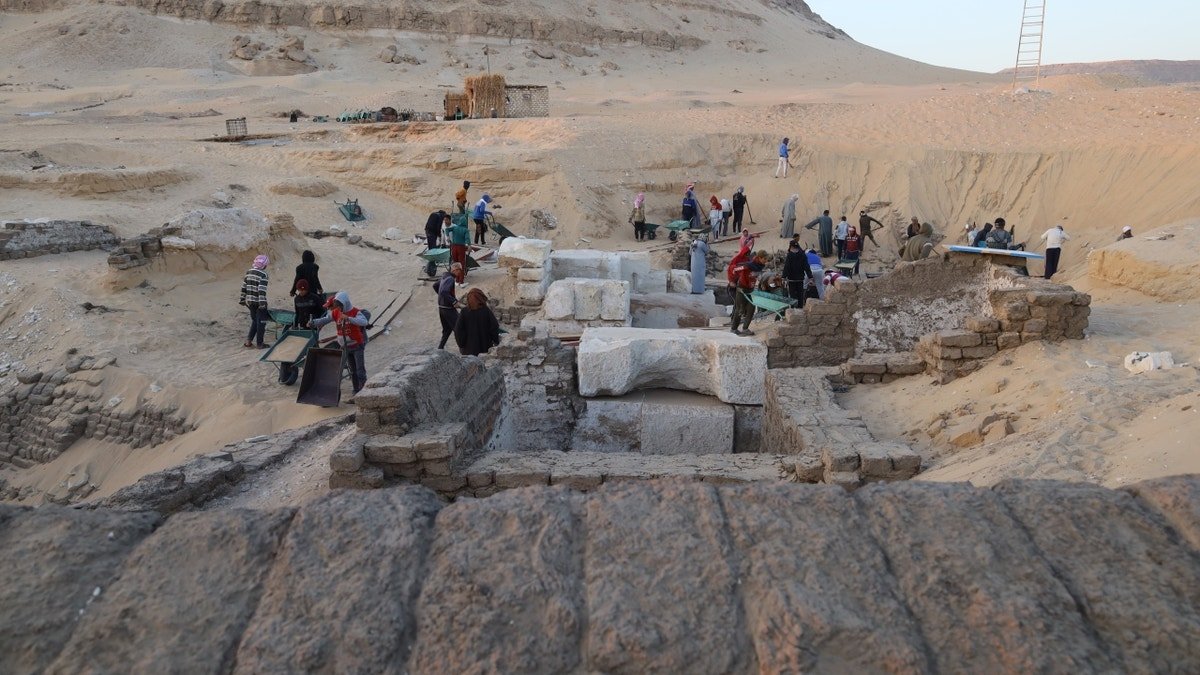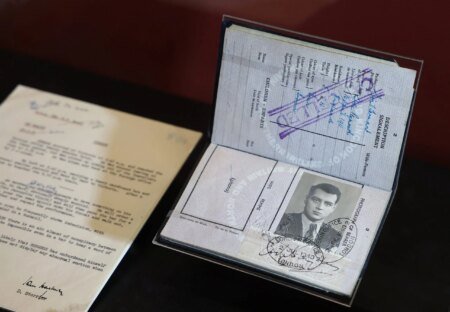Archaeologists in Egypt recently uncovered a once-in-a-lifetime discovery: an unknown pharaoh’s tomb, dating back 3,600 years.
The excavation, which was conducted near the Egyptian city of Abydos this winter, was announced by the Penn Museum in Philadelphia last week. The pharaoh’s tomb was found 23 feet underground and featured a decorated entryway and mudbrick vaults.
Pictures show a team of international archaeologists excavating the deep tomb in the Egyptian desert.
Excavation leader Dr. Josef Wegner, an egyptology professor at the University of Pennsylvania, spoke with Fox News Digital about the discovery, which dates back to the Second Intermediate Period.
ANCIENT TOMB TIED TO ROMAN GLADIATOR DISCOVERED BY ARCHAEOLOGISTS
“Surprisingly, we came upon a royal tomb that we had no idea existed,” Wegner said. “Excitingly, it’s adding new evidence on what seems to be the early development of a group of fascinating kings that we call the Abydos dynasty. They are kind of a lost, forgotten dynasty.”
“There were no human remains remaining, there were no remnants of the king himself or his funerary equipments,” he said.
“The original decoration that contained hieroglyphic texts and columns that contained his name had been damaged just enough that the name is gone. But we can see where the name flanked the entrance to his burial chamber.”
The excavation wasn’t Wegner’s first rodeo. In 2014, he discovered a different pharaoh’s tomb: Senebkay, another Second Intermediate Period ruler who was totally unknown in the historical record until that time.
ARCHAEOLOGISTS UNCOVER PROOF OF ANCIENT BIBLICAL BATTLE AT ARMAGEDDON SITE: ‘EXCEPTIONAL PHENOMENON’
“Finding a new pharaoh’s tomb is that’s always, always quite an exciting moment in time. So it’s the second time it’s happened to me, and I guess I shouldn’t be too greedy, but I’m hoping for more if we can find them,” Wegner said.
“He was an unknown king, and we excavated the area right around that. And it seemed like we could more or less exhausted the evidence on this Abydos dynasty…Lo and behold, 10 years almost to the day since finding Senebkay, we found a new tomb that’s bigger than any of the other ones,” he added.

Wegner, who also works as a curator at the Penn Museum, described the Second Intermediate Period as an “intriguing” part of Egyptian history which spanned from roughly 1650 to 1570 B.C.
“It was a period where Egypt was broken apart into a sort of rival kingdoms,” the expert explained. “We think there were as many as four.”
“The ancient tomb robbers were not always very considerate in what they did in the process of tomb robbery.”
“It provides the basis for the rise and establishment of the new Kingdom of Egypt, which is usually thought of as the golden age of the pharaohs.”
Wegner characterized the limestone burial chamber as “grand,” complete with mud brick vaults and a “very deep shaft entrance system.” But unfortunately, the king’s name has not emerged yet.
For more Lifestyle articles, visit foxnews.com/lifestyle.

“We were a little frustrated,” Wegner laughed. “The ancient tomb robbers were not always very considerate in what they did in the process of tomb robbery.”
“They didn’t think about archaeologists in the future that would be looking for bits and pieces of evidence,” he added.
“We’ve completed the full excavation of it and what it was, you know, was essentially robbed out. It seems to have been a very richly-equipped royal tomb. So it did attract tomb robbers for that reason.”
Even though the tomb was plundered, Wegner is hopeful that more artifacts will show up in the future – and that the pharaoh’s name will be discovered.
“There’s significant potential in the orbit of the tomb, around the periphery of it, there could well be objects that were discarded, remains of stone vessels,” he described.
“For example, what we call the canopic jars that would have had the name of the king on them. Those kinds of things probably weren’t very interesting to tomb robbers.”

“And there’s indications that there may be more of these tombs,” he added.
The next stage is to study the terrain around the tomb, where more evidence is slated to emerge.
The latest discovery comes just weeks after archaeologists found the long-lost tomb of King Thutmose II, which marked the first major royal tomb discovery since King Tutankhamen’s tomb was found in 1922.
Read the full article here
















